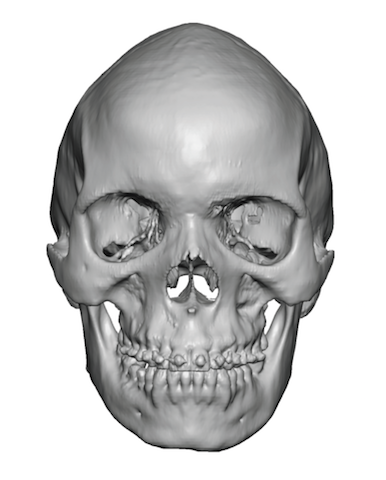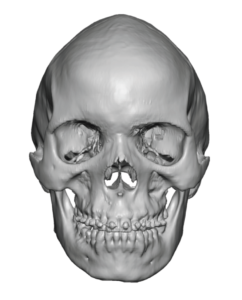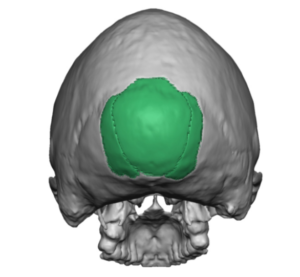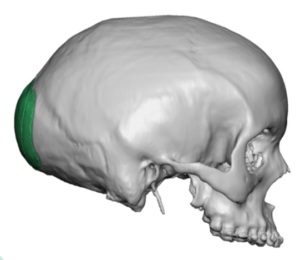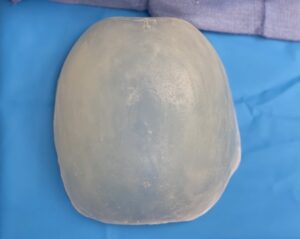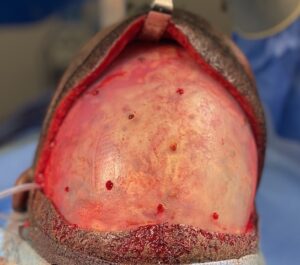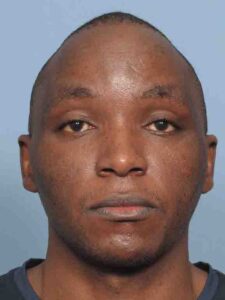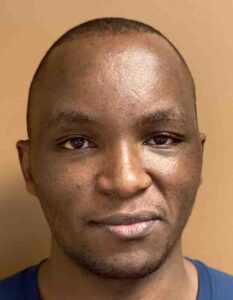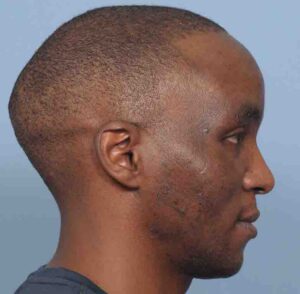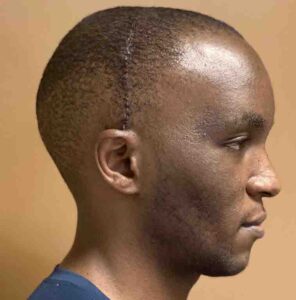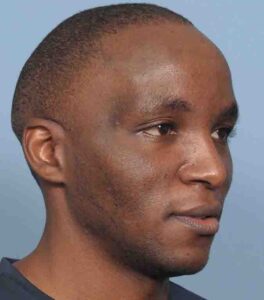Background: The shape of the head is affected by a variety of factors during its development. One of items major factors is skull sutures which serve as a region of bine growth stimulus as the growing brain pushes the growing plate of bone outward. Because of their major influence on skull growth their premature partial or complete closure (crnaiosynostosis) is going to result in head shape malformations.
Craniosynostosis is a well recognized congenital skull condition that creates a distinct pattern of head shape malformations based on the cranial suture affected. The most common form of craniosynostosis affects the sagittal suture, the midline suture that runs between the anterior and posterior fontanelles. When it prematurely closes the head fails to grow normally in width and become elongated from front to back due to the push of the growing brain. The head shape falls under the name of scaphocephaly or boat-shaped head.
Sagittal craniosynotosis is typically treated in early infancy where removal of the closed suture and release and reshaping of the surrounding bone allows for a more normal head shape to develop. Every now and then I will run across a patient who has missed the opportunity to have the definitive craniofacial procedure as an infant for correction. As an adult it is thought that doing much of a head shape correction at an older age is not possible.
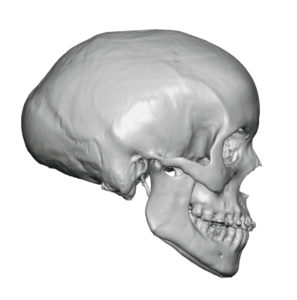
The treatment plan was for as much occipital bone reduction as possible as well as a sagittal crest reduction. Measurements from the scan showed that an 8mm bone reduction was possible.
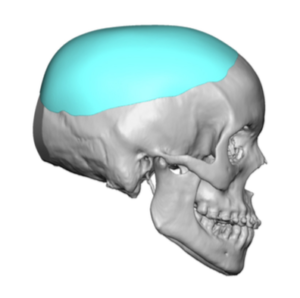

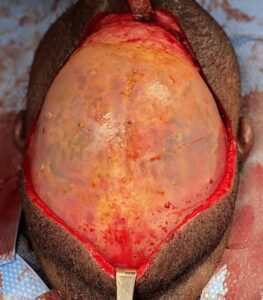
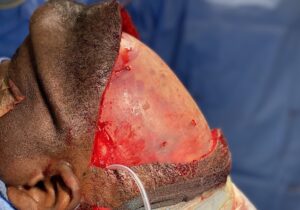

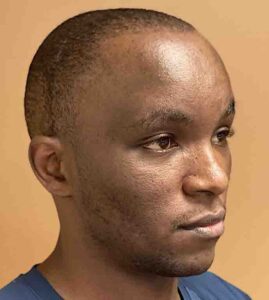
Case Highlights:
1) Untreated sagittal craniosynostosis results in a scaphocephalic head shape which is elongated from front to back and narrow from side to side.
2) Skull reshaping in an adult with a scaphocephalic shape requires a combination of occipital and sagittal bone reductions and parasagittal-parietal augmentations.
3) A custom skull implant for head widening can be put in through a partial or full coronal scalp incision.
Dr. Barry Eppley
Indianapolis, Indiana

